Grab yourself a big root, a knife and some ashes… it’s time to propagate yams!
Also see the CARDICaribbean video on propagating yams here:
Though I pick on the method in my video because I’m not a fan of soaking yams in pesticides or herbicides, it’s a fine presentation with good information otherwise.
Propagating Yams in Three Steps
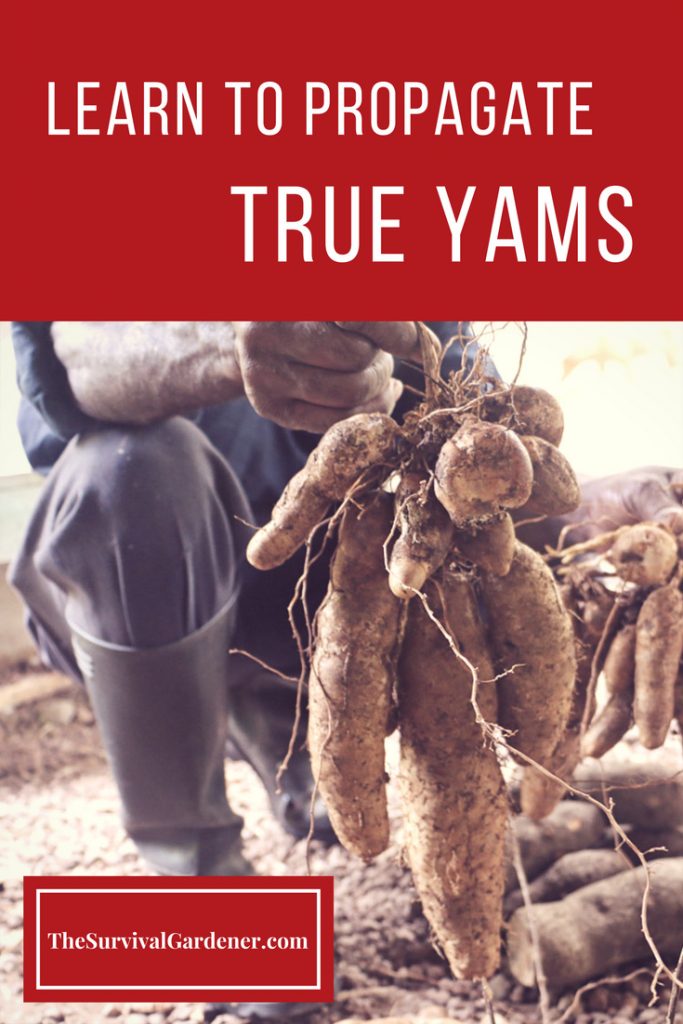
This is the minisett method of yam propagation. If you have bulbils, you can just use those; however, some yam species don’t make bulbils or you may be starting with a store-bought yam and don’t want to plant the whole thing. A good-sized yam can get you a dozen or more plants if you divide it well.
Step 1: Divide the Yam
To propagate yams from minisetts, get a fresh yam and cut it into pieces while ensuring you have a good piece of skin on each one from which the new growth will emerge.
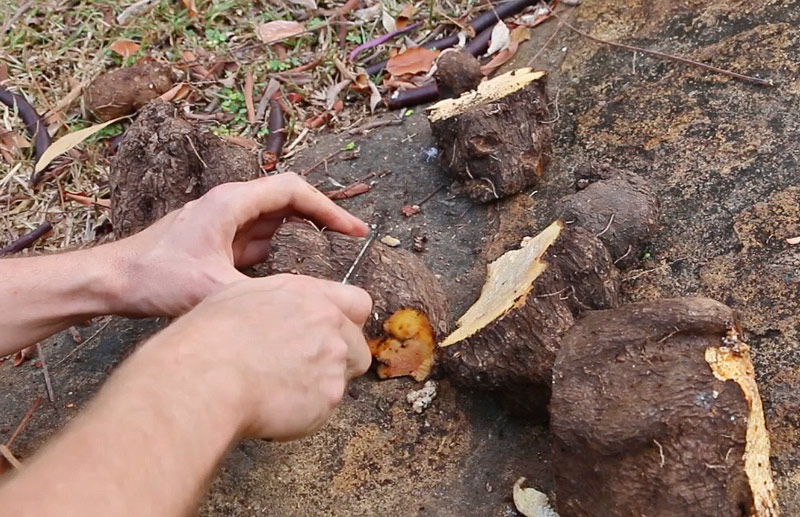
You can cut the yam pieces even smaller than I cut them in the video. Half that size will still work. Larger pieces will give you stronger vines, however, so there’s a balance between getting more plants and getting more vigorous plants.
Step 2: Dip the Pieces in Ashes
Dip the cut pieces of yam in ashes and let them dry a bit.
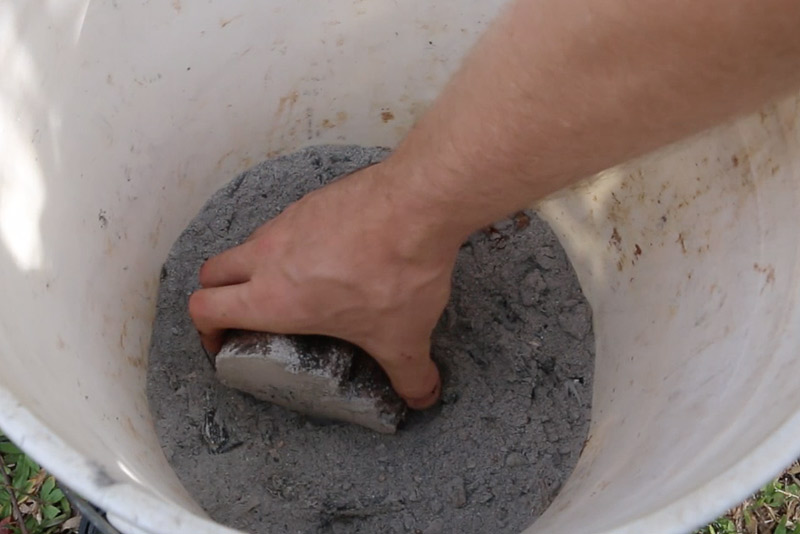
Ashes seem to help heal the wound and protect it from infection. It’s a traditional method practiced in places where yams are grown. Pieces will also grow without ashes, but it’s an easy step so I follow it.
Step 3: Plant Your Yams
It’s important to plant yams in loose soil as they are a root crop.
In Florida sand I just dug a little hold and buried them and they’d get nice and big; however, in clay it’s important to loosen lots of space to give the roots a place to grow.
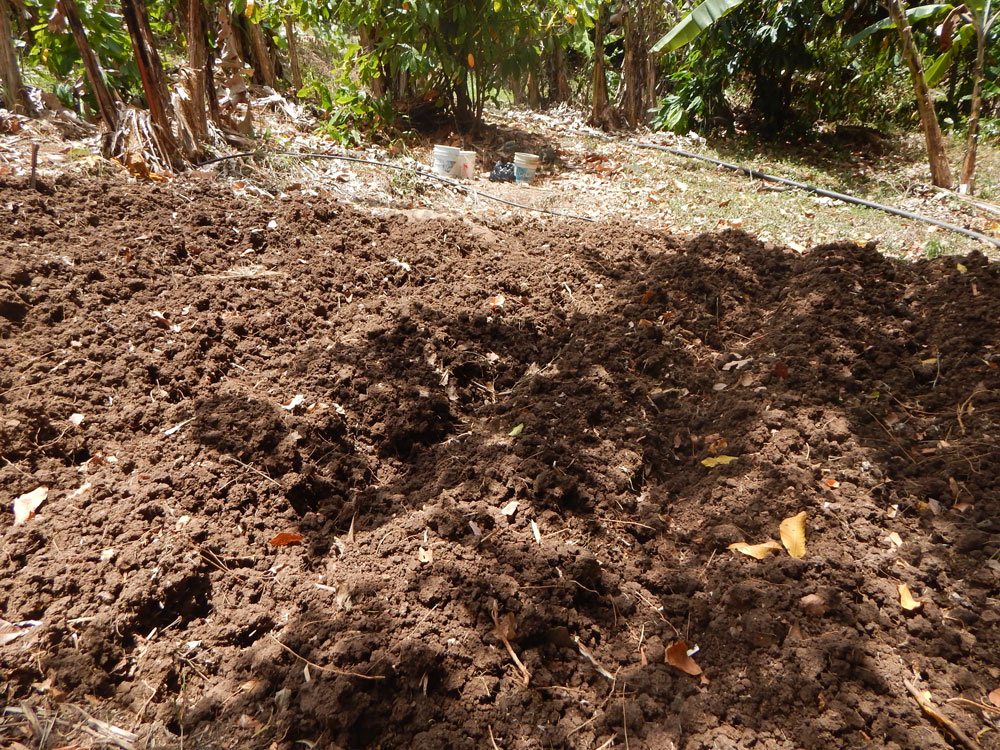
If you like, you can plant your yam minisetts in a big pot or a bed to ensure you only get ones that will sprout. When the vines start popping out from the ground, transfer your yams to where you would like them to grow – and don’t wait long – the vines will grow fast and become a big tangle if you don’t act quickly.
Ensure each yam has a solid stick they can climb. Shoot for 6-7′ tall poles or ever larger.
This is how I cut stakes:
Alternately, yams can be grown on fences or on trees.
More On Yam Propagation
Yam bulbils will also work for planting if you have access to them; however, not all Dioscorea species will make bulbils.
Note: I have successfully propagated Dioscorea alata from cuttings, but I don’t think that method will give you good yields, at least in the first year. If you can’t get roots or bulbils, go for it, though.
Usually it’s just easier to propagate yams by cutting big roots up into minisetts. Try your local ethnic market for yams and other treasures.
With the potato yam, just use entire roots from the cluster without cutting them into pieces, as that is supposed to work better.
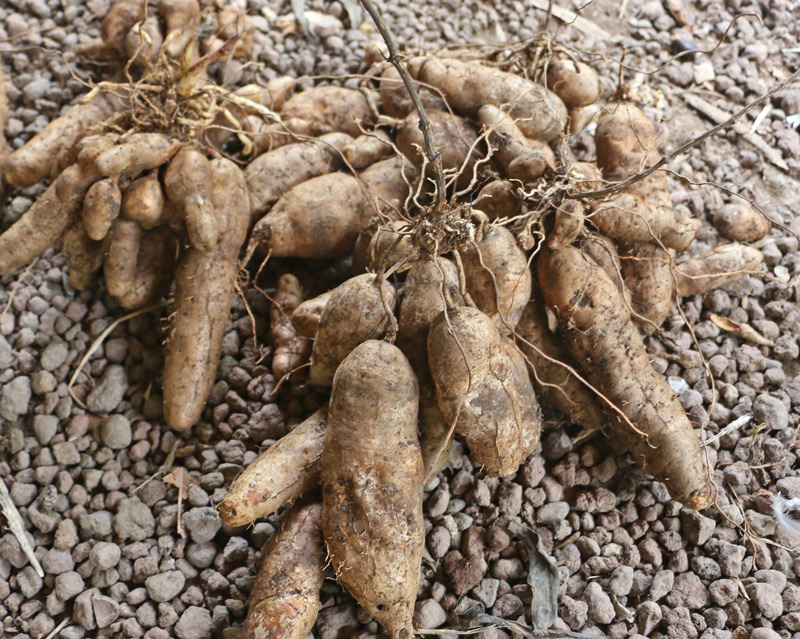
Here are the buckets (and a bag) of cut-up yams we planted, plus the still-intact potato yams:
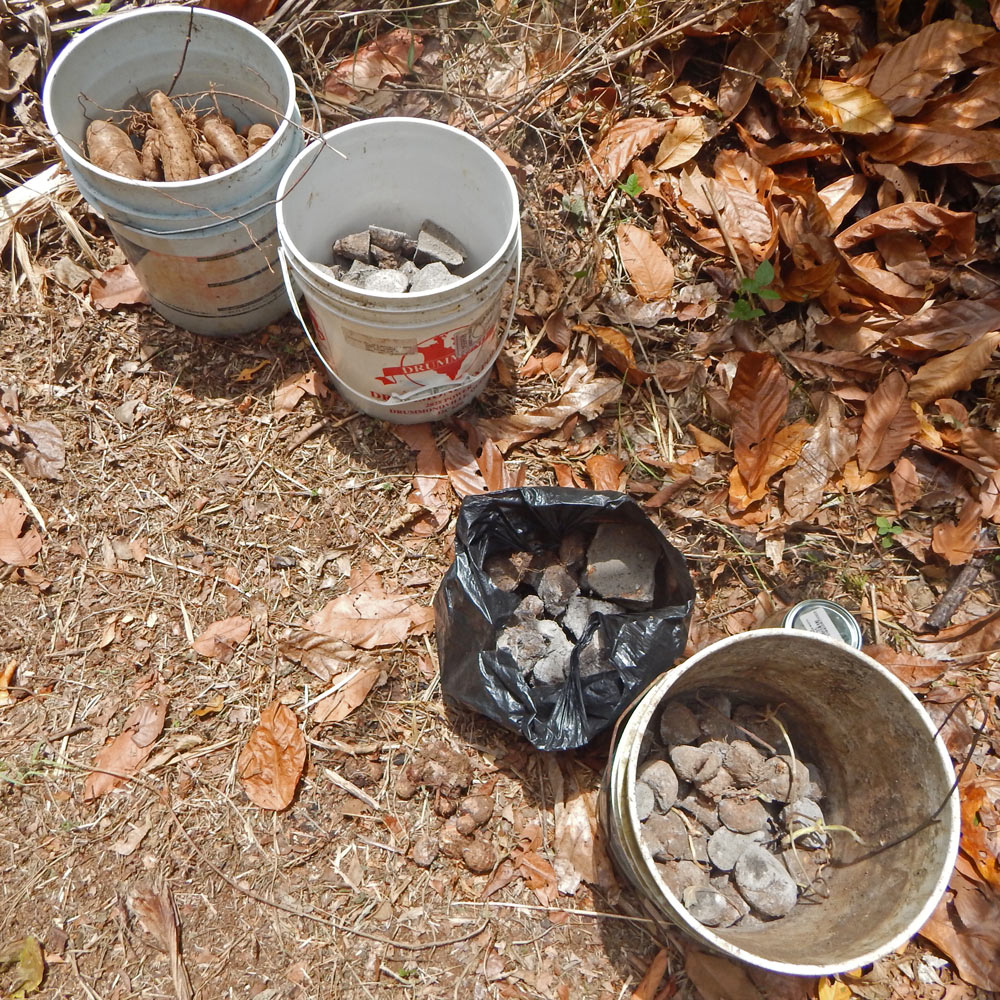
Now it’s time to cut stakes!
Discover more on yams in my survival plant profile.
I also cover yams as a crop in my books Totally Crazy Easy Florida Gardening and Grow or Die: The Good Guide to Survival Gardening.
Some recent reviews of Grow or Die:
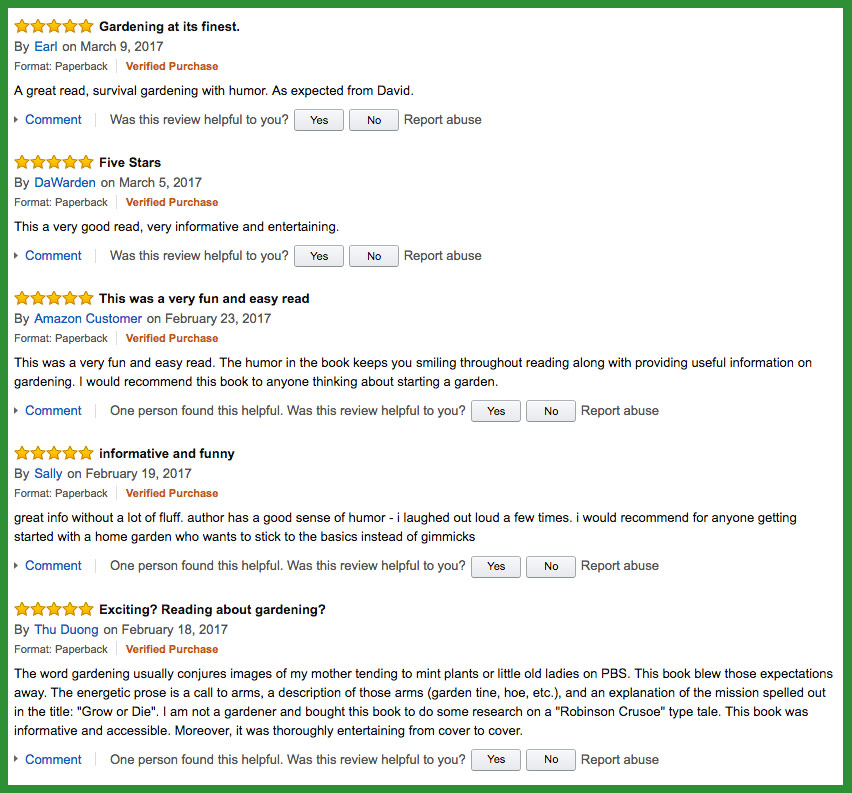
Though tropical yams won’t work in colder climates, temperate gardeners will have luck with the Chinese yam, AKA Dioscorea batatas.
Have fun – yams are a wonderful staple crop with good flavor and beautiful vines.

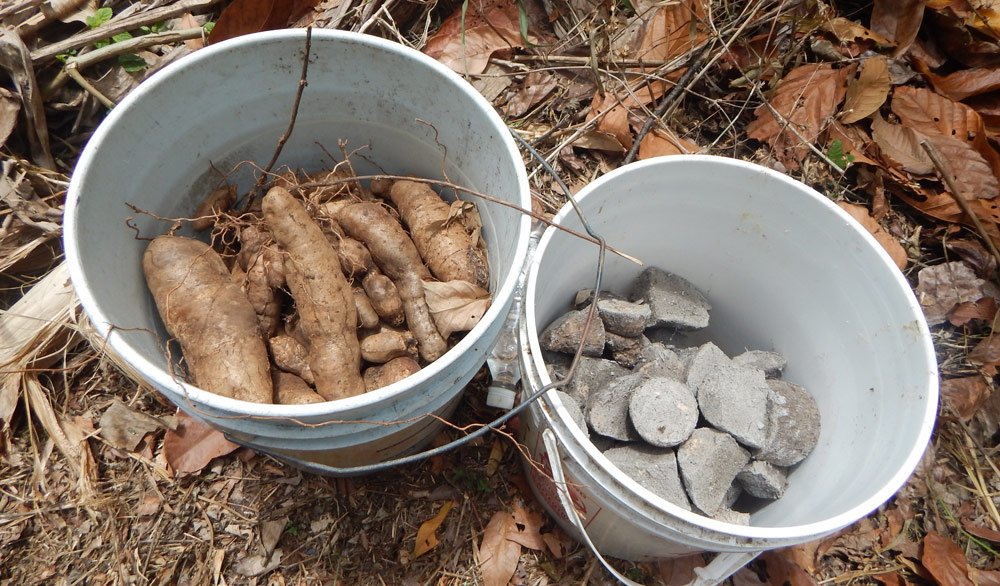
23 comments
Great timing…. I recently pulled out a yam that has been growing for 2 years or longer (my first). It has been sitting on my porch for a few days. I am ready to figure out how to eat it but I also want to make new ones before I start chewing on it.. and then now your video comes out to show me how to do it. (make new ones not chew).. super… thanks.
Keith
David, do you have any experience with discorea opposita (Chinese Yam) are there any different probigation issues? I found a source of rizhomes on Ebay and figured I might try it. I cannot find a source for the bulbifera or alotta varieties yet. Hoping you Rachel and the kids are doing well. Cheers! Fred and Anna in England.
Yes, I grew it. Look up “yamberries” on this site and on my YouTube channel.
The little bulbils don’t always grow, but they will often take. I put them in somewhat moist soil and put them on a windowsill or a greenhouse rack and watered now and again until they came up. If you get a little handful of them, you’re sure to get multiple starts. They’re easy to grow and will take the cold, too.
David, I just found a sprouting vine from one of the chinese yam bulbils I planted, being that it is September 23rd should I just leave it in the ground over winter and see what happens or should I dig the bulbil and vine out and keep inside till spring? Thanks in advance. Fred formerly of Florida now in England. :)
https://www.dropbox.com/s/dth6j17p3qrccge/20170923_115404.jpg?dl=0
Awesome. Thank you for the advice, I will let you know how it goes. Just got Coccinia Grandis seeds today, I am psyched. :)
I’ve also read about the aeroponic method of yam propagation. It gives disease and pest free yam seeds.
dear Good,
how do I place my yam at planting. thanks
Plant them 4″ deep or so, whatever way you like. Some people plant them cut-side up, but I don’t think it makes any difference – the vines know how to grow up, no matter how the root is sitting.
I want to know if the minisett method of yam production is targeted at producing seed yam or saleable yam
For propagation seed to grow into saleable yams by year’s end.
How long for minisetts to sprout . I plated several versions as well as bulbils and nothing has happened.
They have internal timers and usually come up right about now.
I’ve watched your vids on cutting and planting yams. I’m wanting to plant several plants around areas of my property as a survival backup garden. But, I can’t find any info anywhere on if I can grow them in NW Georgia and if I can leave them to over winter in the ground.
Thanks on any info you can give me.
I have not heard of anyone doing it with D. alata but I would try. D. polystachya would grow just fine there and stay perennial.
I had to teach my students about yam propagation, then I stumbled on your write up. It was really useful and helpful. Thanks.
Thank you, Amadi – glad it was helpful.
Is there any Disadvantage of this method please
Not that I know of.
Sounds good and promising, I tbink i will give it a try
Am from Nigeria, next farming season begins from April; can I start my mimisett nursery now?
Yes.
I’m a missionary in Haiti. A neighbor just gifted me some yams to grow but I have no idea what variety I have. The creole name doesn’t seem to exist on the internet. You mention that potato yam is better planted whole but if I do use the minisett method do you suppose any would come up if are in fact potato yams? Any chance I could send you a picture of my yams for an ID?
By the way, I very much appreciate this site and your YouTube channel. They’re by far the best resources I’ve found for gardening. We’re using your knowledge to help Haitian farmers grow more food. I just planted some squash in ‘melon pits’ this week and sparked interest from my neighbors. Thanks for keeping it all free.
Thank you, Rose – email me pictures: david@floridafoodforests.com
Comments are closed.